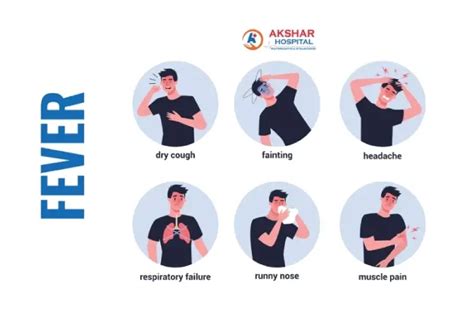Intro
Identify fever symptoms and explore effective treatment options, including medication, home remedies, and when to seek medical help for high temperature, chills, and other related conditions.
Fever is a common health issue that affects people of all ages, from infants to the elderly. It is a natural response of the body's immune system to infection or inflammation, and it can be caused by a variety of factors, including viruses, bacteria, and other microorganisms. When the body detects the presence of an invader, it releases chemicals that trigger a rise in body temperature, which can help to fight off the infection. However, fever can also be a symptom of a more serious underlying condition, and it is essential to recognize the signs and seek medical attention if necessary.
In many cases, fever is a self-limiting condition that can be managed with rest, hydration, and over-the-counter medications. However, in some instances, fever can be a sign of a more severe illness, such as pneumonia, meningitis, or sepsis, which requires prompt medical attention. It is crucial to monitor the body temperature and watch for other symptoms, such as headache, sore throat, or rash, which can indicate the presence of an underlying condition. By understanding the causes, symptoms, and treatment options for fever, individuals can take steps to manage their condition and prevent complications.
Fever is a widespread health issue that affects millions of people worldwide. According to the World Health Organization (WHO), fever is one of the most common symptoms of illness, and it can be caused by a variety of factors, including infectious diseases, allergies, and environmental factors. In the United States alone, it is estimated that over 100 million people experience fever each year, resulting in millions of doctor visits and hospitalizations. By learning more about fever and its treatment options, individuals can take steps to manage their condition and reduce the risk of complications.
Understanding Fever

Causes of Fever
There are many potential causes of fever, including: * Viral infections, such as the flu or common cold * Bacterial infections, such as pneumonia or meningitis * Allergies, such as hay fever or food allergies * Environmental factors, such as heat stroke or sunburn * Medications, such as antibiotics or vaccines * Underlying medical conditions, such as cancer or autoimmune disordersSymptoms of Fever

Diagnosing Fever
Diagnosing fever typically involves a physical examination and medical history. The doctor may ask questions about the individual's symptoms, such as the duration and severity of the fever, and any other symptoms that are present. The doctor may also perform a physical examination, including checking the body temperature, blood pressure, and heart rate. In some cases, the doctor may order laboratory tests, such as blood work or imaging studies, to help determine the underlying cause of the fever.Treatment Options for Fever

Home Remedies for Fever
There are several home remedies that can help to manage fever, including: * Staying hydrated by drinking plenty of fluids * Resting and avoiding strenuous activities * Using cool compresses or cool baths to help bring down the body temperature * Taking over-the-counter medications, such as acetaminophen or ibuprofen * Eating a healthy diet that includes plenty of fruits, vegetables, and whole grainsPreventing Fever

Risks and Complications of Fever
Fever can be a sign of a more serious underlying condition, and it is essential to seek medical attention if necessary. Complications of fever can include: * Dehydration, which can lead to serious health problems if left untreated * Seizures, which can occur in people with a history of seizure disorders * Brain damage, which can occur if the body temperature becomes too high * Organ damage, which can occur if the underlying cause of the fever is not treated promptlyConclusion and Next Steps

What is the normal body temperature range?
+The normal body temperature range is between 97.7°F (36.5°C) and 99.5°F (37.5°C).
What are the most common causes of fever in children?
+The most common causes of fever in children include viral infections, such as the flu or common cold, and bacterial infections, such as ear infections or pneumonia.
How can I manage fever at home?
+You can manage fever at home by staying hydrated, resting, and using over-the-counter medications, such as acetaminophen or ibuprofen. You can also use cool compresses or cool baths to help bring down the body temperature.
When should I seek medical attention for fever?
+You should seek medical attention for fever if you experience any of the following symptoms: severe headache, stiff neck, difficulty breathing, chest pain, or severe abdominal pain. You should also seek medical attention if you have a fever that lasts for more than 3 days or if you have a fever that is accompanied by a rash or other symptoms.
Can fever be prevented?
+Yes, fever can be prevented by practicing good hygiene, getting vaccinated against common illnesses, and avoiding close contact with people who are sick. You can also prevent fever by staying hydrated, eating a healthy diet, and getting plenty of rest.
